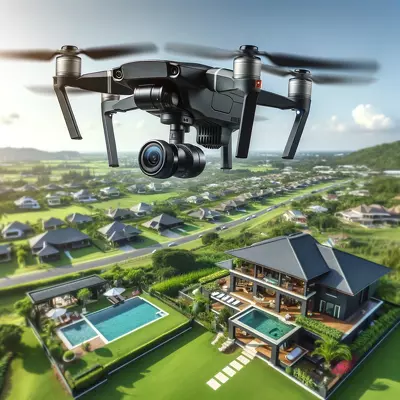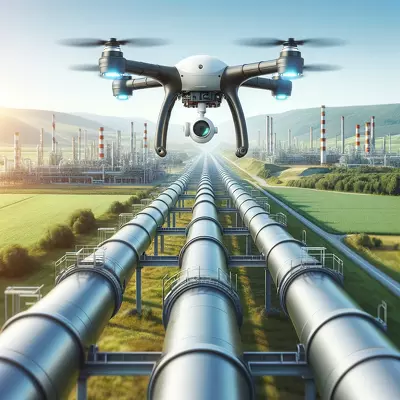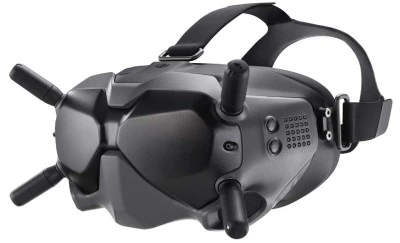Capturing the Skies: Selecting the Best Entry-Level Drones with Cameras for New Pilots

Thanks to the latest advancements in drone technology, exploring the world of aerial photography and videography has become more accessible than ever. For beginners eager to capture stunning visuals from the skies, a plethora of drones equipped with cameras are now available. These entry-level drones not only offer ease of use but also come with features that were once exclusive to their high-end counterparts, making them perfect for novices in the field.
As an Amazon Associate, we earn a commission from qualifying purchases.
I. Introduction
A. Importance of Drones in Photography and Videography
The advent of drone technology has revolutionized the fields of photography and videography, introducing a new dimension to visual storytelling. These high-flying cameras have unlocked perspectives that were once exclusive to professional cinematographers with access to helicopters or cranes. Today, drones are not just tools for professionals; they are also accessible to hobbyists and enthusiasts looking to explore the skies and capture life from a bird’s eye view.
B. Advantages of Entry-Level Drones with Cameras
For beginners, entry-level drones with cameras offer a gateway into the world of aerial photography without the complexity and cost associated with professional models. These drones are designed with user-friendliness in mind, often featuring intuitive controls, automated flight modes, and built-in safety features. Moreover, they provide an affordable solution for those looking to develop their skills, offering a blend of performance and portability that’s perfect for capturing everyday adventures.
II. Essential Features to Look for in Entry-Level Drones
A. Camera Quality
The heart of any drone is its camera. When selecting an entry-level drone, it’s crucial to consider the camera’s resolution, frame rate, and sensor size. A good quality camera will deliver clear, crisp images and smooth video footage, even in varying light conditions. Look for drones that offer at least 1080p video recording, though 4K resolution is becoming more common and accessible in entry-level models.
B. Flight Stability and Durability
A drone’s ability to maintain stable flight is essential for capturing high-quality images and videos. Features such as GPS and vision positioning systems help drones hover accurately and navigate safely, even in challenging conditions. Durability is also a key factor, as entry-level drones should withstand occasional bumps and minor crashes. Look for drones with sturdy construction and modular designs that allow for easy repairs and part replacements.
C. Ease of Use and Control
For newcomers to drone flying, ease of use is paramount. Entry-level drones often come with beginner-friendly features such as one-touch takeoff and landing, automatic return-to-home, and pre-programmed flight paths. The control interface, whether it’s a dedicated remote or a smartphone app, should be intuitive and user-friendly, offering a smooth learning curve for first-time pilots.
III. Top Entry-Level Drones with Cameras
A. DJI Mini 2 Quadcopter Drone – Best Overall
The DJI Mini 2 stands out as an exemplary choice for beginners, combining portability, power, and ease of use. Weighing just under 249 grams, it falls in the safest and lowest weight class of drones, which in many areas exempts it from certain regulations. Despite its compact size, the Mini 2 needs to improve on performance. It boasts a 4K camera stabilized by a 3-axis motorized gimbal, ensuring smooth, professional-grade footage. With a maximum flight time of 31 minutes and robust wind resistance, the Mini 2 offers reliability and freedom in various shooting conditions.
B. Potensic Atom SE Drone – Best Value
For those on a budget, the Potensic Atom SE Drone presents an excellent balance of cost and capabilities. It features a dual-camera system, including a 4K front camera and a 1080p bottom camera, allowing for versatile shooting angles and perspectives. The Atom SE is also equipped with intelligent flight modes, such as follow-me and circle-fly, making complex shots simpler to achieve. Its compact design doesn’t just make it portable; it also makes it exceptionally user-friendly, especially for beginners looking to get the most out of their investment.
C. DJI Mini 3 Pro Drone – Best Splurge
If budget is less of a concern and you’re seeking top-tier features in a small package, the DJI Mini 3 Pro is the drone to consider. It pushes the boundaries of what entry-level drones can offer, featuring a larger 1/1.3-inch sensor that captures 48MP photos and 4K video at 60fps. The Mini 3 Pro’s obstacle sensing and avoidance system ensures safer flights, while its focus track modes empower users to create dynamic, cinematic footage effortlessly. Although it’s a pricier option, the Mini 3 Pro’s high-end features make it a worthwhile investment for serious beginners aiming for professional results.
IV. FAQs
Q: What is the flight time of entry-level drones with cameras?
A: Entry-level drones typically offer flight times ranging from 20 to 30 minutes, depending on the model and flight conditions.
Q: Do these drones require registration with aviation authorities?
A: Registration requirements vary by country. In many cases, drones under 250 grams, like the DJI Mini 2 and DJI Mini 3 Pro, may not require registration. However, it’s essential to check local regulations before flying.
Q: Are entry-level drones suitable for indoor use?
A: Yes, many entry-level drones are compact and stable enough for indoor use, but it’s advisable to fly in spacious areas to avoid accidents.
Q: Can I fly an entry-level drone in windy conditions?
A: Entry-level drones can handle mild to moderate winds, but it’s best to avoid flying in strong winds to prevent loss of control or damage to the drone.
Q: Do these drones support live video streaming?
A: Yes, most entry-level drones with cameras offer live video streaming through their respective smartphone apps, allowing for real-time viewing.
Q: Are these drones compatible with accessories like additional batteries or propellers?
A: Yes, most drone manufacturers offer a range of compatible accessories, including batteries, propellers, and carrying cases, to enhance the flying experience.
Q: What is the warranty period for entry-level drones?
A: Warranty periods vary by manufacturer and model but typically range from 6 months to 1 year and cover defects in materials and artistry.
V. Conclusion
A. Best Offer
The DJI Mini 2 Quadcopter Drone is the top recommendation for those venturing into aerial photography and videography. Its perfect blend of portability, performance, and ease of use makes it the ideal companion for novices and seasoned enthusiasts alike.
B. The Alternative
For those seeking value without compromising on features, the Potensic Atom SE Drone offers an impressive array of capabilities at an accessible price point, making it a worthy alternative for budget-conscious beginners.
VI. Suggested Readings
Drones have not only changed the landscape of photography and videography but have also inspired a plethora of literature. Whether you’re a beginner eager to learn the basics or an experienced pilot looking to refine your skills, there’s a book for you. The following titles are excellent resources for expanding your knowledge and proficiency in drone technology and aerial photography.
- “The Drone Pilot’s Handbook” by Adam Juniper – A comprehensive guide for new drone pilots, covering everything from the basics of flight to advanced aerial photography techniques.
- “Drone Photography and Video Masterclass” by Fergus Kennedy – This book delves into the art and science of aerial photography, offering practical tips and inspiring insights for aspiring aerial photographers and videographers.
- “Build Your Drone Manual” by Alex Elliott – This manual provides step-by-step instructions on building, customizing, and flying your drone, offering a deeper understanding of the mechanics and technology behind these fascinating devices.
- “Drones: The Professional Drone Pilot’s Manual” by Brian Halliday – A resource for those considering drones for commercial purposes, covering the technical aspects, regulations, and business opportunities in the drone industry.
These titles not only offer a wealth of knowledge but also serve as gateways to the thrilling world of drones, opening up new horizons for hobbyists and professionals alike. As the technology continues to evolve, so too does the literature surrounding it, promising ongoing learning and discovery for enthusiasts of this dynamic and captivating field.





